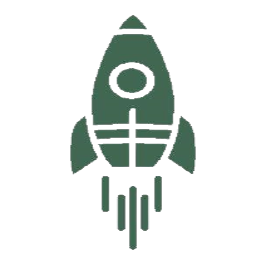How to Use Forecasting in Looker: A Step-by-Step Guide to Predict Future Trends
- Suji Shri B

- 2 days ago
- 3 min read

Why Forecasting Matters
Most dashboards only tell you what already happened. You see last month’s revenue, last week’s website traffic, or yesterday’s conversions. These insights are useful, but not enough for proactive planning.
Teams often need to know what will likely happen next.
Looker Forecasting Graphs solve this problem by extending historical data into the future using built-in predictive models. There is no need for Python notebooks, spreadsheet exports, or external forecasting tools. Everything happens inside Looker.
Forecasting shifts your analytics from describing the past to predicting upcoming patterns, which directly improves planning, budgeting, and operational decisions.
What Looker Forecasting Is
Looker Forecasting uses internal statistical models to project future values based on patterns in your existing data. When enabled, Looker analyzes trend lines, seasonal cycles, and historical changes, then predicts what future periods might look like.
Supported Chart Types
Forecasting currently works with the following visualization types:
Charts (Cartesian)
Line
Area
Column
Bar
Scatter Plot
Text and Table Visuals
Single Value
Table
Table Legacy
Word Cloud
Note: Community visualizations are not supported for forecasting yet.
This creates a seamless experience because you can forecast directly inside the charts you already use.
Why Forecasting in Looker Matters for Business Teams
Forecasting is not simply a feature. It changes how teams think and act. Here is the practical value:
1. Plan Ahead With Confidence
Forecast revenue, traffic, engagement, or demand and act based on expected outcomes instead of reactive patterns.
2. Build Realistic Targets
Use predicted values as the baseline for KPIs, OKRs, and capacity planning.
3. Detect Anomalies Early
Compare forecasted values against actuals and spot unusual deviations before they become problems.
4. No Technical Skills Required
Everything happens inside the Looker interface. Analysts at any skill level can enable forecasting.
Forecasting helps organizations become proactive rather than reactive.
How to Use Forecasting in Looker: Step-by-Step

Below is the full process for configuring forecasting inside an Explore.
1. Open an Explore
Begin with any dataset that contains a time-based field such as Date, Week, or Month.
2. Add Your Fields
You must include:
One time dimension
At least one measure (up to five measures can be forecasted at once)
Make sure the time dimension has dimension fill enabled.
3. Sort by the Time Field
Sort your Explore in descending order so the most recent data appears first.
4. Open the Forecast Menu
Inside the visualization settings, locate the Forecast panel.
5. Configure Forecast Settings
Select Field
Choose the measure or measures you want to forecast.
Length
Set how far ahead you want projections, such as 5 days, 3 weeks, or 6 to 12 months.
Prediction Interval
Turn this on if you want Looker to display confidence ranges around the forecasted values.
Seasonality Options
Automatic: Let Looker detect repeating patterns
Custom: Specify the cycle length, such as 12 for monthly seasonality
None: Trend-only forecasting without cycles
6. Run the Forecast
Looker immediately displays:
Forecasted values
Trend continuity
Optional prediction intervals
Your dashboard now shows both historical performance and future projections.

Example Use Cases
Sales Forecasting
Estimate next month’s revenue, order volume, or pipeline health.
Website and Marketing Analytics
Predict future traffic, conversions, or campaign impact without moving data into external tools.
Inventory and Demand Planning
Plan stock levels and procurement based on anticipated demand trends.
Customer Support
Forecast ticket volume and prepare staffing schedules based on projected workload.
These predictions help teams make timely decisions and match resources to future requirements.
Key Benefits Summary
Capability | Business Advantage |
Built-in forecasting models | No external tools or scripts needed |
Compatible with native charts | Faster adoption across teams |
Forecast up to five measures | Supports multi-metric planning |
Confidence intervals | Better visibility into uncertainty |
Trend and seasonality detection | More accurate future projections |




Comments